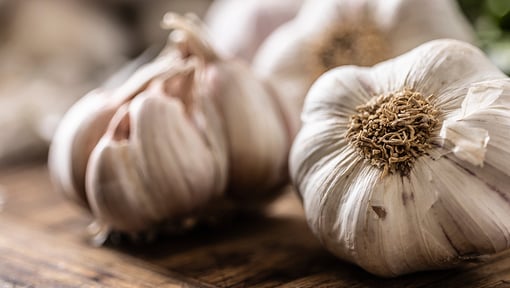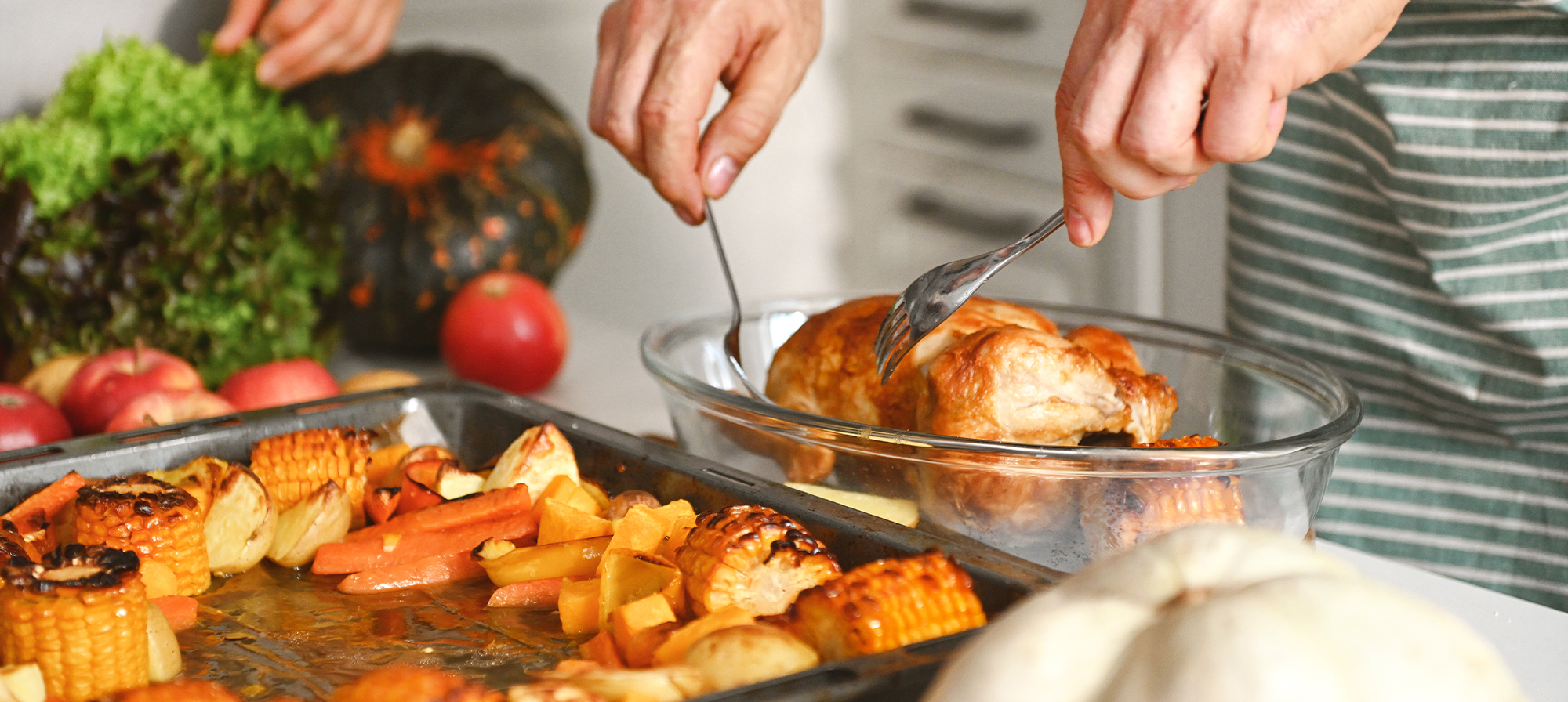Looking for a dish of spring flavors that will tantalize your tastebuds? Look no further than this healthy, tasty Spinach and Vegetable Casserole with tomatoes.
April harkens the start of spring. With it comes a host of in-season fruits and veggies you'll want to add to your plate. Five popular ones brimming with flavor and health-giving nutrients? Spinach, tomatoes, garlic, navy beans, and basil. And it just so happens that these ingredients are the star attractions in the Spinach Vegetable Casserole recipe below.
Spinach is available year-round, but it's often extra-sweet in spring. Of course, it's great raw in spinach salads. But it's also exquisite as a side dish sautéed with onions, added to a sandwich in place of lettuce, or part of your morning smoothie.
Here’s a closer look at all this recipe’s components and its many health perks.
Spinach
The main ingredient in this dish is the fresh, bursting-with-flavor spinach. Spinach is great for your heart. And it may help improve eye health, lower blood pressure, and prevent cancer. Spinach is brimming with fiber, protein, and the antioxidant lutein. You’ll find other nutrients in spinach, too—like calcium, iron, potassium, magnesium, and vitamins A, B6, B9, C, and E.
Spinach is a versatile, mineral- and vitamin-rich, dark leafy green veggie. You can select from a host of varieties, including arrowhead, smooth-leaf, savoy, or curly leaf. Spinach tastes great, whether raw or cooked. It keeps well in the crisper of your refrigerator. Or you may want to freeze or blanch it to use later.

Tomatoes
These sweet, juicy veggies—which are technically fruits—are loaded with vitamins A, C, B9 (folate), and K, as well as potassium. And tomatoes are brimming with the antioxidant lycopene. Research suggests this may help lower the risk of certain cancers. Lycopene is also thought to support healthy cholesterol levels and may help slow the formation of artery-stiffening plaque. These health perks in turn help support your blood vessels and heart health.

Navy beans
It may come as no surprise that the navy bean got its name from the U.S. Navy. They used the beans as a staple in the sailors’ diets. Thankfully, the bean is now more universal and can be found worldwide.
The bean is rich in nutrients, including protein. Navy beans are also high in folate and thiamin, both important for memory and cognition. They are also thought to lower the risk of colorectal cancer, thanks to the dietary fiber found in them.
Navy beans are also thought to help protect the heart and keep it strong due to their folate and magnesium. This high-fiber food also helps keep blood sugar levels steady, which can help prevent or better manage diabetes. The fiber in navy beans can also enhance digestion.

Garlic
Simply put, garlic is good for you. It may help boost your immunity. One study found that a group who increased their intake of garlic lowered their risk of colon cancer. It may also improve heart health and support healthy blood pressure levels. Plus, it adds a hard-to-resist flavor to any dish.
Looking for other dishes with tomatoes and garlic? Try this recipe for split pea soup. 
Basil
With a color and flavor that lights up any dish, basil has a host of benefits.
“Basil contains nutrients and compounds that can help stave off chronic diseases, including cancer, diabetes, heart disease, and arthritis,” says registered dietitian Gillian Culbertson, RD, LD, in a 2023 article from the Cleveland Clinic .
“On top of that, basil has antibacterial and anti-inflammatory benefits. It can even boost mental health,” Culbertson added.
Basil has vitamin K, which helps your blood clot properly and boosts bone strength. Vitamin K also has a positive effect on blood sugar, heart and blood vessel health, immunity, and the ability to think and reason. It protects against cell damage, which in turn may help prevent cancer. It also helps support healthy blood pressure and cholesterol levels.
So, with all the amazing health benefits and flavors this dish has to offer, try cooking up the scrumptious recipe below.

Spinach Vegetable Casserole
Ingredients
- 1 (16-oz.) can low-salt stewed tomatoes
- 1 (16-oz.) can navy beans, rinsed and drained well
- 1½ lbs. fresh spinach, washed, dried, trimmed, and chopped
- 2 cups diced fresh tomatoes
- ¼ cup chopped fresh basil
- 2 large garlic cloves, minced
- ½ tsp. salt
- ¼ tsp. black pepper
- 2 cups homemade croutons
- ½ cup shredded low fat mozzarella cheese
Home-Made Croutons
- Cooking spray
- 10 slices whole grain bread
- 1 tsp. garlic powder
Directions:
Croutons
Cut bread into 1-inch cubes. Coat lightly with olive oil spray. Sprinkle with garlic powder. Heat in oven at 425 degrees, turning occasionally, until toasted.

Casserole
Crush ½ cup of croutons and mix with cheese in a bowl, set aside. Combine tomatoes and beans in a large pot. Cook over medium until heated through. Add spinach, cover and cook on low heat for 10 minutes, stirring occasionally. Add tomatoes, basil, garlic, salt, pepper, and the rest of the croutons.
Transfer to a large ovenproof casserole dish. Bake at 300 degrees for 20 minutes. Sprinkle crouton cheese mixture over the top. Place under the broiler for 3–5 minutes or until cheese is melted.
Yield: 6 servings
Prep Time: 20 minutes
Cook Time: 25 minutes
Difficulty: 2
| Nutrition Facts |
| Calories 216 |
| Fat calories 27 |
| Total fat 3g |
| Saturated fat 1.5g |
| Cholesterol 6.7mg |
| Sodium 497.2mg |
| Total carbohydrate 31.7g |
| Dietary fiber 18.1g |
| Sugars 6.6g |
| Protein 17.5g |
Not a Silver&Fit® member? Learn more about everything the program has to offer, including more helpful healthy living tips like this, here on our website.
This information is not intended to take the place of regular medical care or advice. Please check with your doctor before using this information or beginning any self-care program. Images used for this article do not depict any members of the Silver&Fit Program.
References
American Institute for Cancer Research. (2020, January 2). Tomatoes: major source of lycopene. https://www.aicr.org/cancer-prevention/food-facts/tomatoes/
Cleveland Clinic. (2023, September 19). 5 health benefits of basil. https://health.clevelandclinic.org/benefits-of-basil
Cleveland Clinic. (2023, December 6). 6 garlic benefits to boost your health. https://health.clevelandclinic.org/6-surprising-ways-garlic-boosts-your-health
Cleveland Clinic. (2023, November 27). Kale vs. spinach: Which is heart-healthier? https://health.clevelandclinic.org/kale-vs-spinach-which-is-heart-healthier/
Collins, E. J., Bowyer, C., Tsouza, A., & Chopra, M. (2022). Tomatoes: An extensive review of the associated health impacts of tomatoes and factors that can affect their cultivation. Biology, 11(2), 239. https://doi.org/10.3390/biology11020239
Food Data Central. (n.d.). Spinach, raw. https://fdc.nal.usda.gov/fdc-app.html#/food-details/168462/nutrients
Food Data Central. (n.d.). Foundation Foods. https://fdc.nal.usda.gov/fdc-app.html#/food-search?query=&type=Foundation
Penn State Extension. (n.d.).Growing spinach, a cool-season vegetable. https://extension.psu.edu/growing-spinach-a-cool-season-vegetable#
Mayo Clinic. (Nov. 23, 2023). Nutrition and healthy eating. https://www.mayoclinic.org/healthy-lifestyle/nutrition-and-healthy-eating/in-depth/high-fiber-foods/art-20050948
This article was written by Kimberley Reynolds, edited by Gail Olson, and clinically reviewed by Elizabeth Thompson, RDN, MPH on February 13, 2024.





